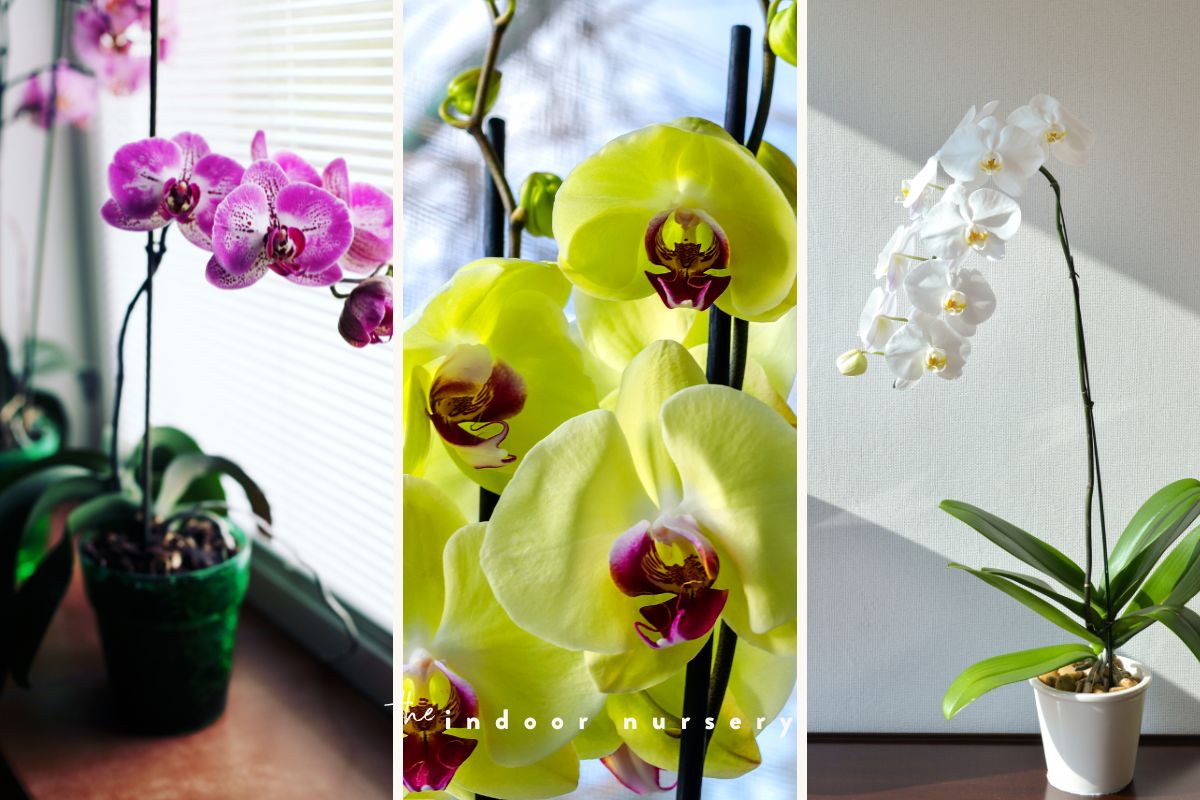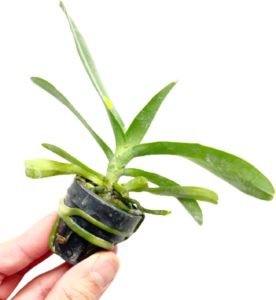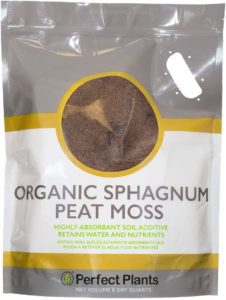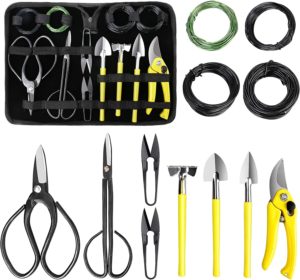Key takeaways
- Place your orchid in a spot that gets plenty of bright, indirect light.
- Never place your orchid in direct sunlight or near a drafty window.
- Keep the humidity high by misting with room-temperature water or placing the pot on a tray of pebbles and water.
Orchids are beautiful, exotic plants that can be kept in the home for many years. Orchid care can be a bit tricky, but with proper knowledge and care, orchids can provide years of enjoyment and beauty. Knowing the correct light, soil, water, and fertilizer requirements for orchids is critical for their growth and blooms…
… and with the right care, your orchid plants will reward you with stunning blooms for a long time.
Plant description
Orchids are tropical plants that come in an array of colors and flower shapes and sizes. They range from small and unassuming plants to larger specimens with showy blooms. Orchids can bloom for extended periods of time, up to several months in some cases, with proper care.
As tropical plants, most orchid species are used to sitting in the nooks and crannies of trees that reach up into the jungle canopy. The orchid roots catch the rain water as it trickles down the bark of the tree or from the humid environment itself. They naturally receive filtered bright light from above the tree tops and happily bloom all throughout the year.
This is why growing orchids can sometimes be difficult, because it expects the humid environment found in the jungle… not in our homes where indoor orchids are faced with dry air and low light.
Not to fret, with the proper care for orchids, you can grow orchids for many years to come and produce blooms every single one of those years. I’ll teach you how to do it.
Orchid care facts
| Common name | Orchid |
| Botanical name | Orchidaceae (family) |
| No. of species | around 28,000 |
| Family | Orchidaceae |
| Biological life cycle | perennial |
| Mature size | as big as space and conditions allow; usually between 6 inches and 3 feet as potted plants |
| Time to maturity | 3 to 8 years |
| Origin | Orchids are believed to have originated in the tropical and subtropical regions of the world, such as South and Central America, Africa, and Southeast Asia. They are first recorded in Japan and China. |
| Light conditions | bright, indirect light |
| Soil type | Orchids prefer a soil-less potting medium. These are usually composed of bark, sphagnum peat moss, charcoal, and perlite. |
| Temperature range | Orchids prefer warm temperatures, ideally between 18-27°C (65-80°F). |
| Watering | Water orchids regularly, however, avoid overwatering. The potting medium should be allowed to dry out completely between waterings. |
| Water pH | 5.5 and 6.0 |
| USDA Zone | Most orchids can be grown outdoors in USDA Zones 9-11, but can also be grown as houseplants. |
| Toxicity | Orchids are not specifically toxic for humans or pets and, in fact, are commonly edible. |
Popular Orchid Varieties/Related Plants
Phalaenopsis, Cattleya, Cymbidium, Dendrobium, Oncidium, Paphiopedilum, and Vanda.
Care tips for growing orchids
Light
Best light: bright, indirect light
Orchids need bright, but indirect light. An east or west window is usually a good choice. South-facing windows can also be used, but you’ll need to move the orchid further away to avoid burning the foliage.
Water
Water needs: Weekly
Water your orchid freely, either with a pitcher of water pouring over the plant and draining completely, or by flooding them in the sink with filtered water to allow the orchid time to absorb the water. You want the orchid’s roots to be exposed to water frequently so that the root system has time to receive the oxygen that the H2O provides.
Healthy roots will be frosty white to bright green in color and stiff as they are filled with water.
- If your orchid roots are dried and shriveled, then you need to water your orchid more frequently.
- If the root system is mushy and dark, then there is root rot and you need to stop watering immediately.
Humidity
Humidity needs: between 40-60% relative humidity
Orchids prefer a relative humidity of 40-60%. They like higher humidity levels when they are in active growth and a little less when they are not. You can increase humidity by using a plant humidifier, misting the leaves or placing the pot on a humidity tray filled with pebbles and water.
Temperature
Optimal temperature: 65 to 85 F (18 to 29 C)
Orchids prefer warm temperatures, ideally between 18-27°C (65-80°F). Avoid placing them in areas that are subject to drafts or extreme temperature fluctuation.
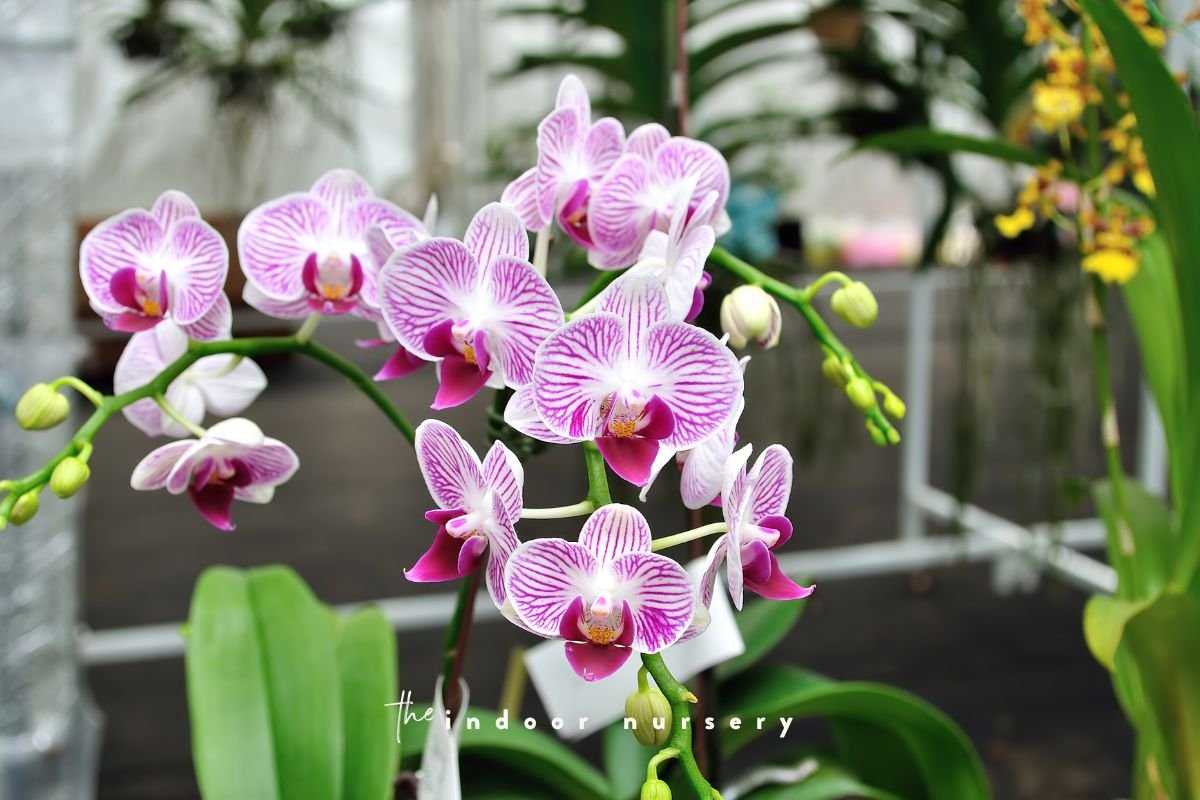
Fertilizer
Fertilizer needs: Monthly
Fertilize your orchids once a month with a balanced fertilizer (like 10-10-10 or 20-20-20). Only use a fertilizer made specifically for orchids.

Soil
Soil Type: soilless orchid mix, well-draining
pH level: 5.5 to 6.0
Regular potting soil isn’t going to cut it here, orchids prefer a soil-less potting medium. These are usually composed of orchid bark, sphagnum moss, charcoal, and perlite. The sphagnum moss allows the mixture to retain some moisture without forcing the orchid roots to sit in water. Make sure whatever potting mixture you use, it is well-draining and contains plenty of air pockets for continuous air circulation.
Orchids prefer a slightly acidic soil, with a pH between 5.5 and 6.0. A soilless orchid mix with added bark is ideal. Make sure the pot has drainage holes.
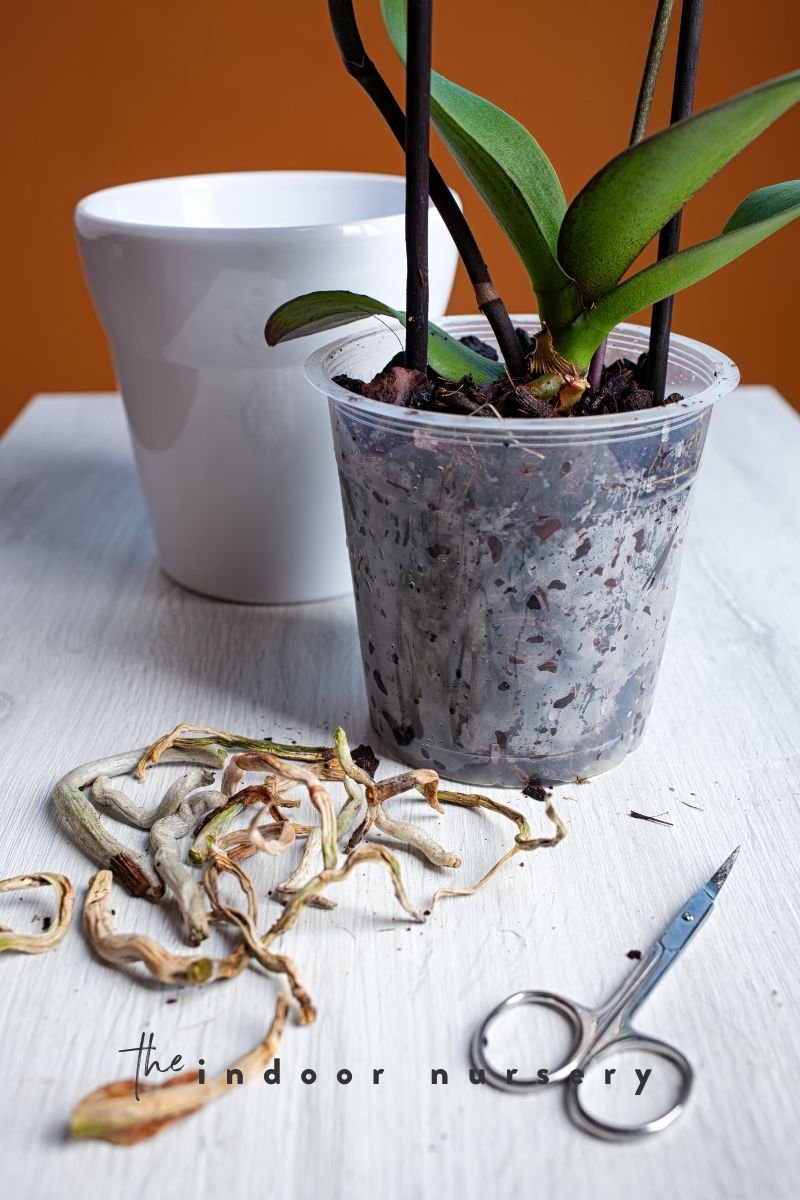
Repotting orchids
Repotting needs: Once every two to three years.
When your orchid has outgrown its pot, it’s time to repot. Use a special orchid potting mix, which is usually composed of bark and moss, and make sure to provide adequate drainage. Orchid repotting is best done in the spring.
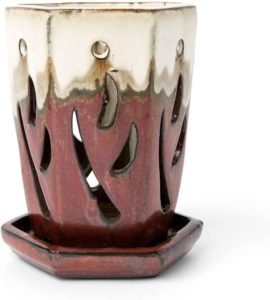
You can also try a hydroponic tower for your orchid, which will more closely mimic the orchid’s natural environment.
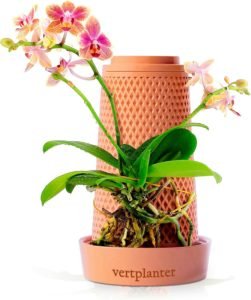
Propagating orchids
Propagation: Division of the rhizome and offsets
These flowering plants can be propagated a few different ways, depending on the orchid species. Divisions of the rhizome and stem cuttings should be done in the spring.
Stem cuttings
Stem cuttings are also an easy and successful way to propagate your orchids. There are three different types of stem cuttings: monopodial, sympodial, and vining.
The different types of orchids that can be propagated this way include:
- Monopodial Orchid Stem Cuttings: Angreacum (Christmas orchid), Ascocenda, Phalaenopsis orchids (moth orchid), and Vanda (Grey orchid or Checkered Vanda)
- Sympodial Orchid Stem Cuttings: Cattleya orchids (corsage orchid or queen of orchids), cymbidium (boat orchid), dendrobium (Cooktown orchid or mauve butterfly orchid) and oncidium orchids (bee orchids, tiger orchids, and dancing ladies)
- Vining Orchid Stem Cuttings: Ludisia orchids and other vining orchid species
Division
Orchids can be propagated through division of the rhizome and through offsets. This can only be done with multi-stemmed orchids (Sympodial orchids). Division can be done at the same time you repot. Use clean, sharp scissors or a sterile knife to divide the rhizome. Make sure each division has several adventitious roots. Pot each division in its own pot with a good orchid potting mix. Place the pot in a warm, well-lit location
Offsets (Keikis)
Offsets, also known as keikis, are miniature plants that form on the flower spikes of some orchids. They can be propagated through keikis, or baby plants. This is the easiest method for propagating orchids. Keikis are usually found on the end of the pseudobulbs (the swollen section of the stem from which the flowers emerge). To propagate keikis, cut the keiki off the mother plant and place it in a well-draining potting medium. Keep the medium lightly moist and provide the keiki with bright, indirect light. It should begin to produce a new
Pruning orchids
Pruning needs: Pruning of dead flowers and foliage
Regular pruning of your orchids will keep them looking their best. Remove any dead or dying foliage and flowers to help promote new growth. Never prune more than one-third of the foliage at once as this can cause stress to the plant.
Pests / Disease
Common orchid pests: Spider mites, mealybugs, thrips, aphids
Common orchid diseases: soft rot, black spots, root rot
Orchids are vulnerable to a range of pests and diseases. Spider mites, mealybugs, thrips, and aphids are all common pests. Soft rot and black spots can be caused by too much water, while root rot can be caused by poor drainage and not enough light.
To prevent pests and diseases, make sure to
- Give your orchid enough light
- Water your orchid regularly (with proper drainage)
- Make sure the potting medium is well-draining
- Keep the humidity level high
- Prune regularly to remove dead and dying foliage and flowers
- Avoid over watering and over fertilizing
- Use organic pest control methods whenever needed
Troubleshooting orchid care
Care for orchids involves a lot of diagnosing. While orchid care really just comes down to keeping a humid environment, these are the three most common issues we see when growing orchids:
- Brown, crispy leaves are usually the result of too much direct sunlight or low humidity. Make sure to protect your orchid from direct sunlight, and increase humidity by misting the plant regularly or by placing the pot on a tray filled with pebbles and water.
- Leggy plants indicate too little light. Move your orchid to a brighter location to prevent these issues.
- Yellow leaves may indicate that your orchid is being overwatered or that it needs more fertilizer. Make sure not to overwater, and fertilize your orchid monthly with a balanced fertilizer.
Common Problems / FAQs
Q: How often should I water my orchid?
A: Water orchids once a week, but you should check the orchid mix more frequently during warmer months. The important thing is that excess water is able to flow through the orchid mix without the possibility of being backed up whenever you water your orchid.
Q: Why are the leaves on my orchid turning yellow?
A: Yellow leaves can indicate that your orchid is being overwatered or that it is not receiving enough light. Make sure you are only watering your orchid when the soil is dry to the touch, and make sure it is receiving plenty of bright, indirect light.
Q: Is it possible to propagate orchids?
A: Yes, it is possible to propagate orchids through division of the rhizome, stem cuttings and offsets (also known as keikis). Division and stem cuttings should be done in the spring, while keikis can be propagated year-round.
Q: How do you get an orchid to bloom again?
A: To encourage orchid blooms, provide it with bright, indirect light, keep the temperature between 18-27°C (65-80°F), fertilize monthly, and keep the humidity level high.
latest in houseplant care
- Rubber Plant Care: How To Take Care Of Rubber Plants
- Growing ZZ Plants: How To Care For A ZZ Plant
- How To Get Rid Of Scale On Plants
- How Often To Water Dracaena (Including Snake Plants)
- How to Use Leca for Plants: Step-by-Step Guide with Pictures
- How To Save An Overwatered Snake Plant
- Hoya Carnosa Care Tips: How To Care For Hoya Carnosa

